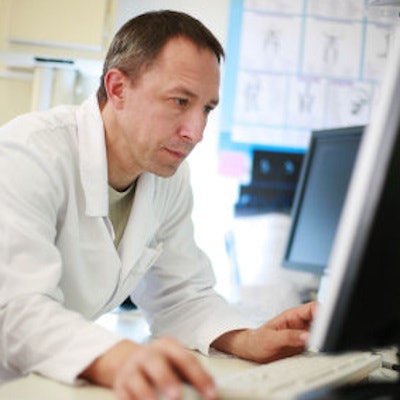
Efforts to prevent physician burnout should focus more on redesigning work processes rather than redesigning physicians, said Dr. Jay Parikh in a May 18 session at the Society of Breast Imaging/American College of Radiology symposium in Savannah, GA.
In a talk that focused on how breast imaging practices can reduce burnout rates among radiologists and other staff members, Parikh of the University of Texas MD Anderson Cancer Center advised facilities to be proactive.
"Overall, what we really need to move the conversation toward is stop trying to redesign the physicians and [instead] redesign work processes," Parikh said.
While current literature is vague when it comes to defining burnout, the World Health Organization (WHO) defines it as "a syndrome conceptualized as resulting from chronic workplace stress that has not been successfully managed." Burnout can manifest in several ways, such as feeling personally overextended, cynicism, physical or emotional depletion, and ineffectiveness among others.
While the WHO's definition of burnout is of the occupational context, it can also affect the social, mental, and physical wellness of radiologists outside the workplace.
Parikh led a study of 370 breast radiologists published in 2020 in Journal of Breast Imaging that found 78.4% of survey respondents reported experiencing burnout. Another study led by Parikh and published in 2018 in Journal of the American College of Radiology found that 55% of respondents reported that burnout is an "extremely or very significant" problem, while 22% reported that burnout is a "significant" problem. The study also found no significant variation by region.
Burnout can lead to several health problems for radiologists, including sleep deprivation, substance abuse, suicidal ideation, and cardiovascular problems, among others. It can also lead to decreased productivity, unprofessional behavior, and burnout in others from an organizational standpoint.
For patient care, burnout can lead to lower quality patient care, more medical errors, lower patient satisfaction, and longer recovery times.
So, what can practices do to combat burnout for their radiology staff and increase resiliency? Parikh said several organizational and individual-focused strategies can be implemented.
Professional coaching has been explored as one way. A pilot study published by Dyrbye et al in JAMA Internal Medicine in 2019 found that an intervention featuring six coaching sessions for physicians decreased burnout by over 17%, while the control group with no such intervention saw burnout increase by nearly 5%.
Parikh also said gathering stakeholder input can also help assess whether burnout exists among staff members at a particular clinic.
"If you really want this to be a priority in your organization or in your breast center, it should be incorporated in your mission statement, which reflects your core values and wellness is no longer just a conversation piece," he added.
Parikh said learning the unique skill sets of individual radiologists, recognizing good work through positive messaging, and good role modeling by leaders are also good strategies for boosting staff morale. A 2009 study by Shanafelt et al in JAMA Internal Medicine reported that 20% of professional effort that focuses on meaningful dimension reduces burnout.
Collaboration in the workplace, promoting self-care for radiologists, assessing risk factors that may cause burnout, and accepting limitations of a radiologist's skill sets are other ways to help, Parikh said.
For the business case in reducing burnout, the American Medical Association estimates that it costs between $500,000 and $1 million to replace a physician, which includes direct and indirect costs. A 2017 report led by Stanford University researchers estimated that it costs between $15,544,000 and $55,506,600 for two-year recruitment due to burnout, with an annual economic cost of $7,600 per employed physician.
"Resiliency matters, but it is not the overlying issue in terms of why we are experiencing burnout," Parikh said. "A lot of it really has to do with opportunities to improve in culture and operations."




















